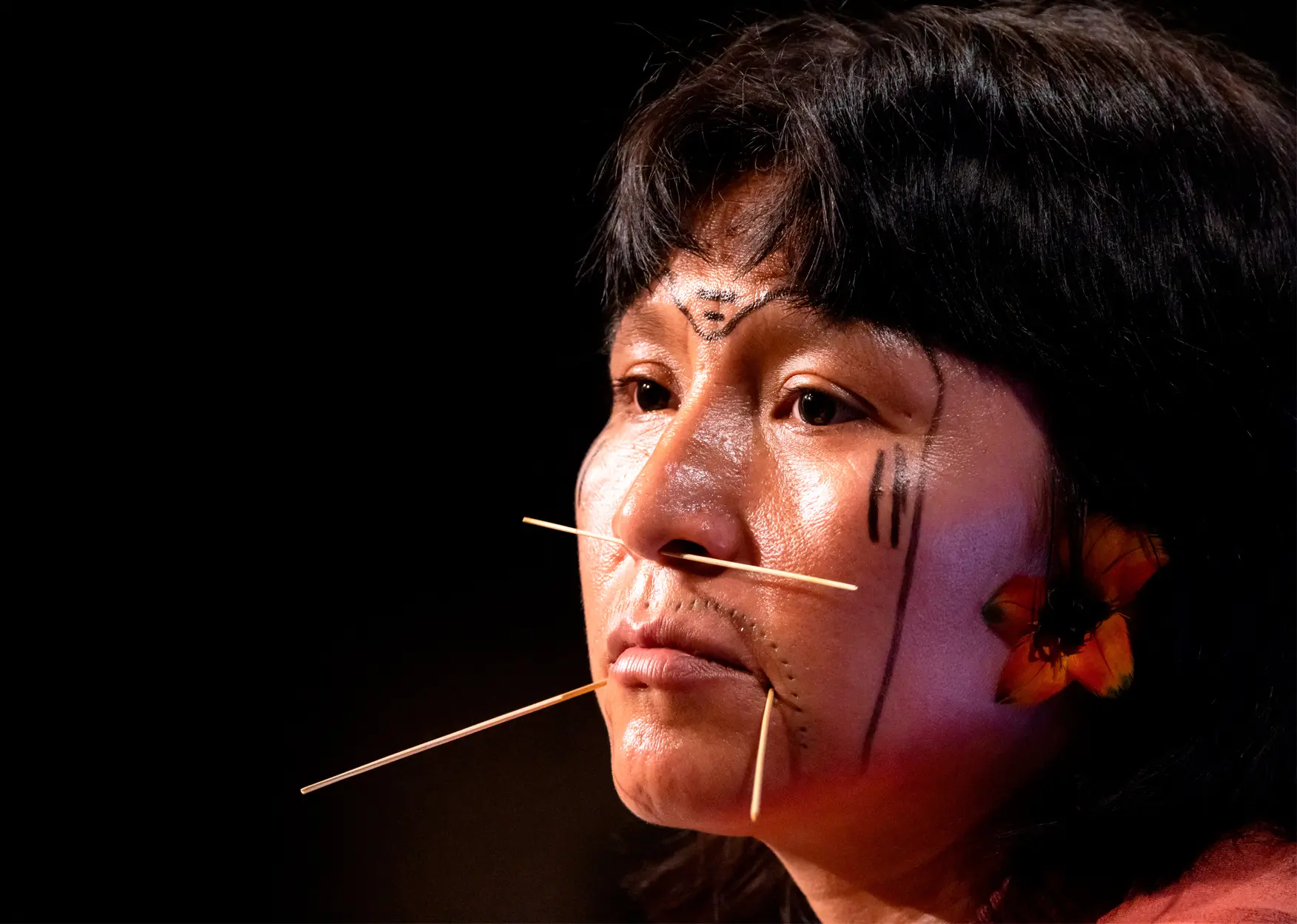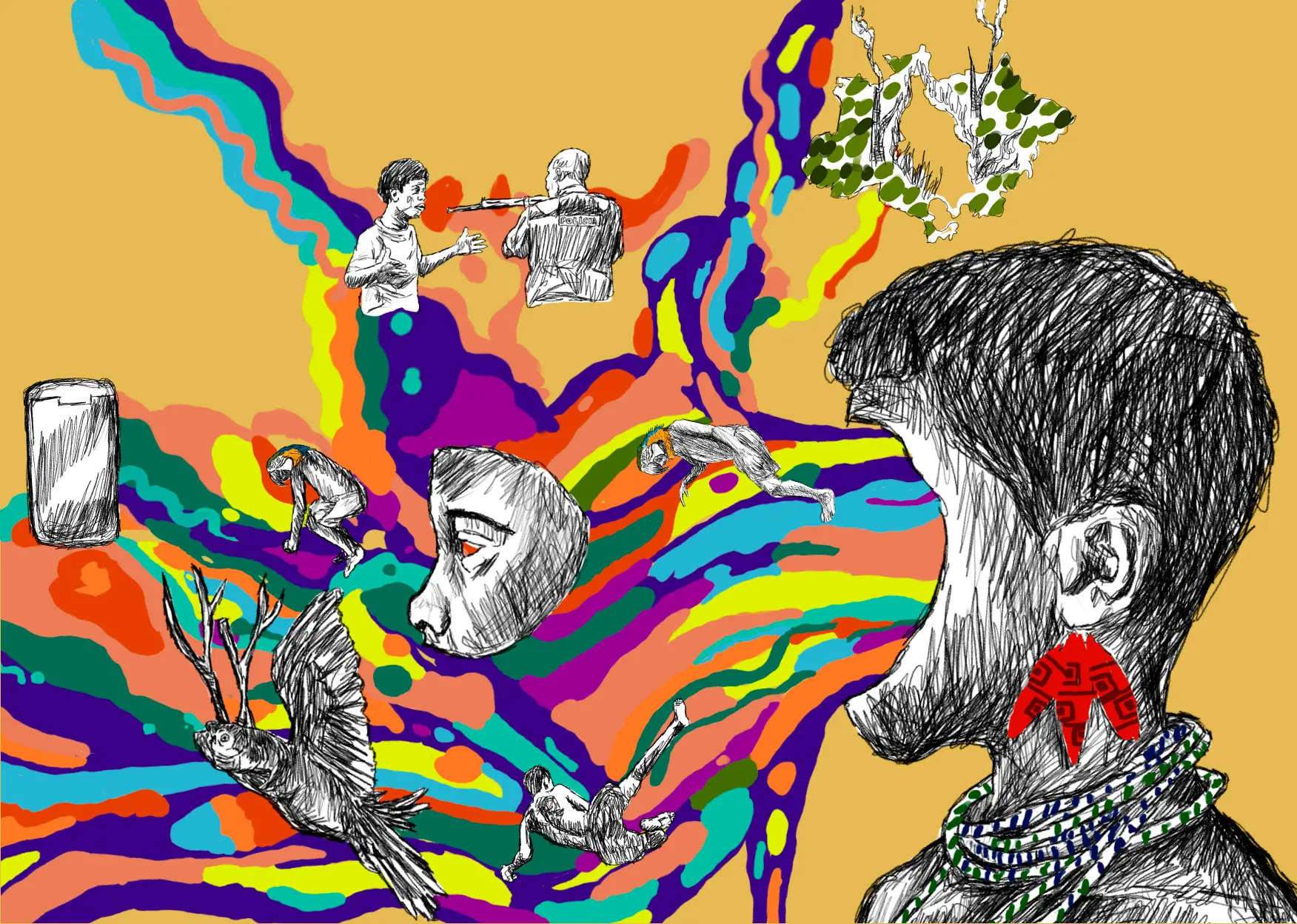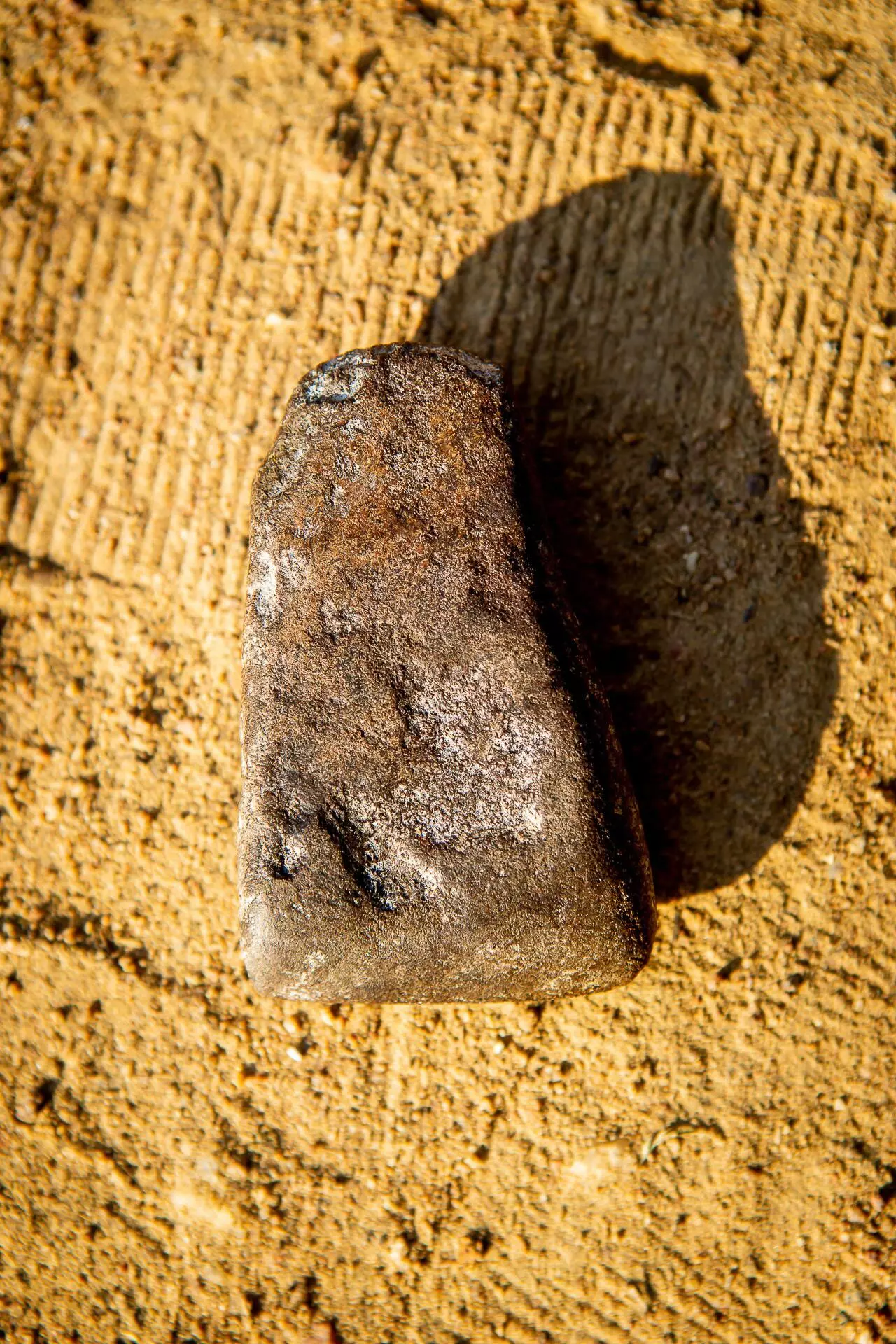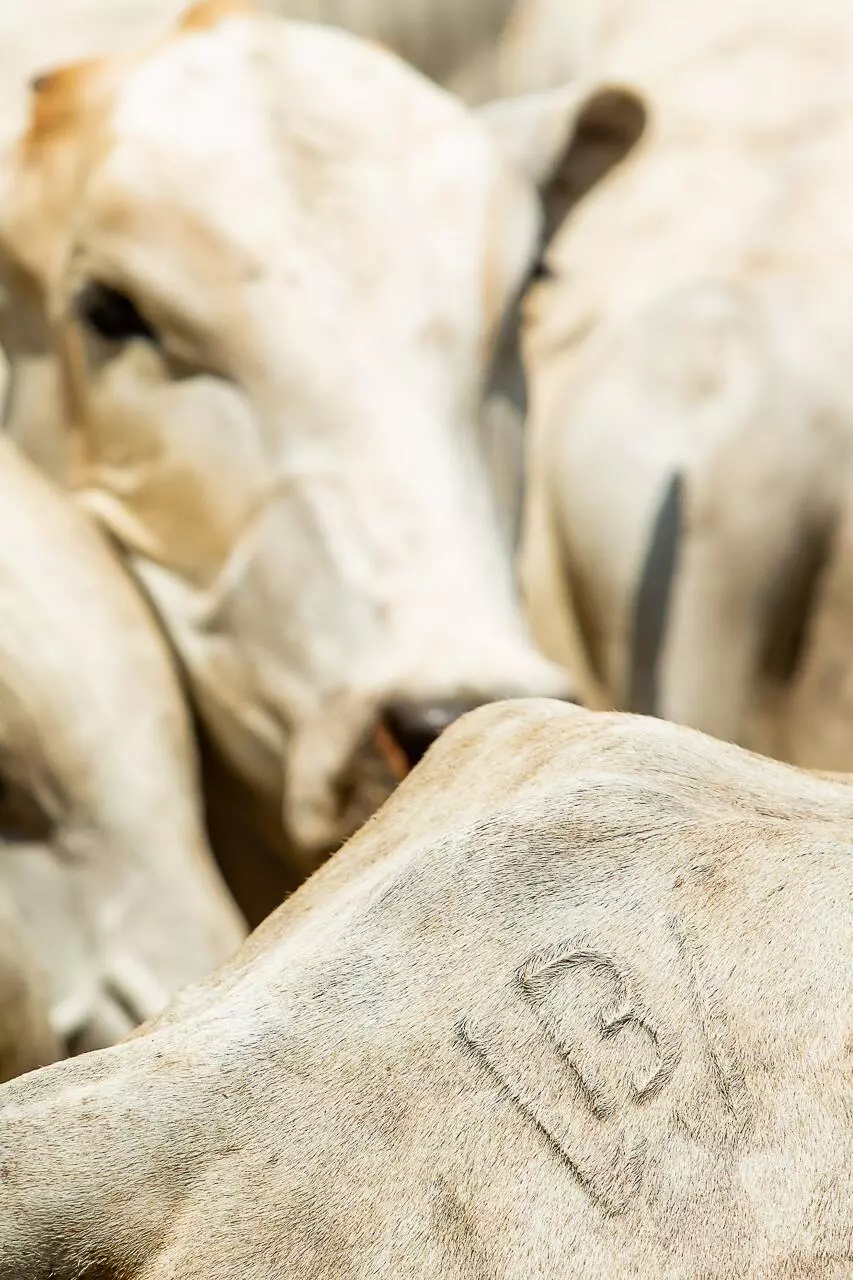Saturday, August 26, 9:00 AM
Two minutes after extinguishing flames on a log bridge set ablaze by arsonists, agents from Brazil’s environmental protection agency Ibama fear they may have reached the end of the line: yet another wooden bridge, this one 33 feet long, has been cut apart by chainsaws, blocking the advance of agency trucks. Some miles beyond the demolished bridge, another group of Ibama agents, assisted by officers with the National Public Security Force, watch over 500 head of illegal cattle. The bridge, which lies in the Ituna/Itatá Indigenous Territory, in the municipalities of Senador José Porfírio and Altamira in southern Pará in the Brazilian Amazon, had been destroyed by local grileiros—criminals involved in complex schemes to steal public land. For these grileiros, annihilating bridges is a strategy for preventing the removal of some 5,000 head of cattle from one of the most conflict-ridden regions in the Brazilian Amazon. Since August 17, when Ibama launched Operation Eraha Tapiro—the agency’s largest effort to remove cattle from an Indigenous territory—the grileiros and their hired men have faced off against government forces.
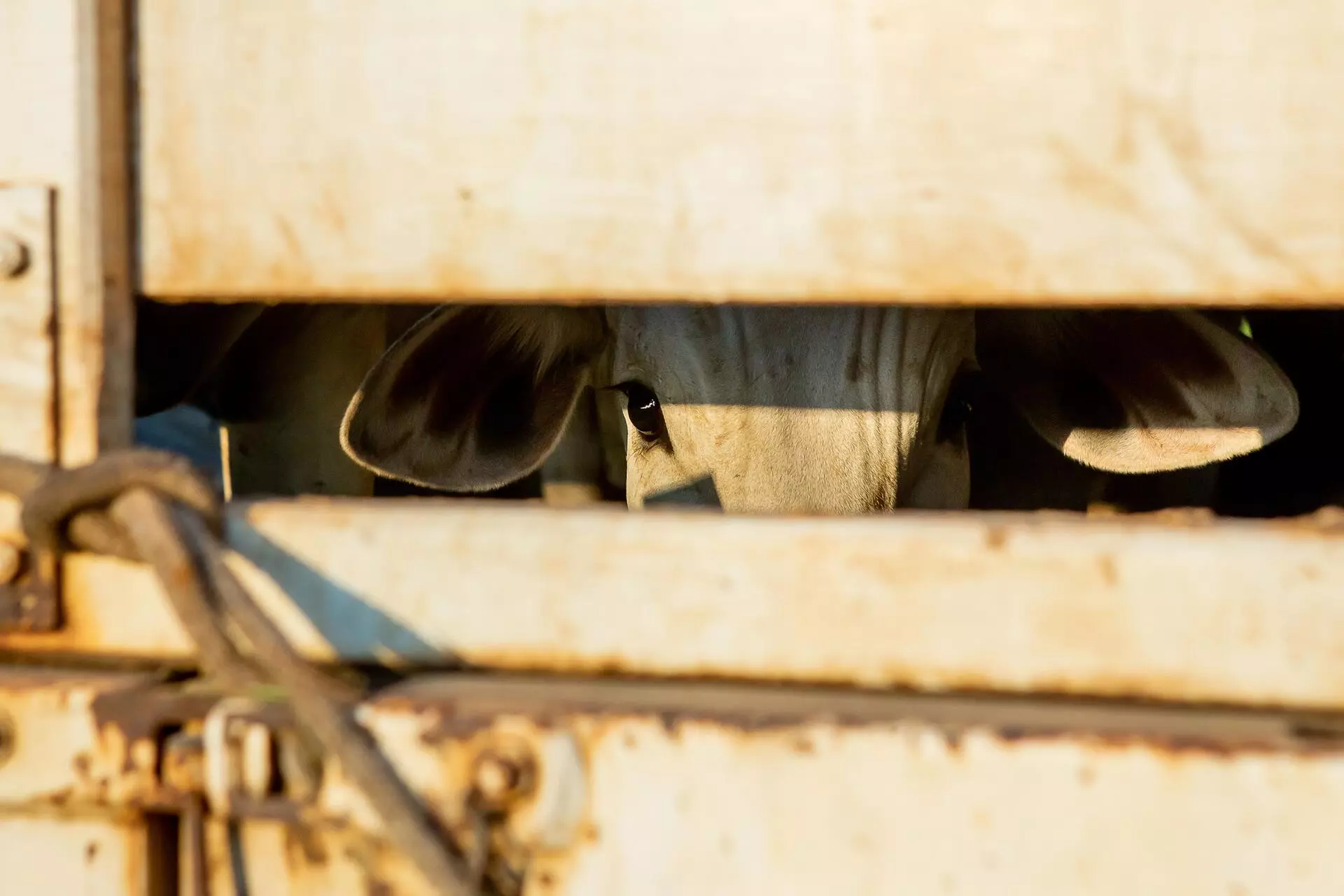
A perverse war: amid mounting destruction, animals are sentenced to death
Covering an area of nearly 550 square miles—almost the size of São Paulo, Brazil’s largest city—the Ituna/Itatá Indigenous Territory is home to a group of Indigenous peoples known as “isolated peoples of the Igarapé Ipiaçava,” who avoid contact with the non-Indigenous. Other original peoples, settlers, and Amazon specialists have been catching glimpses of them since the early 1970s. When the process of legal recognition of Indigenous land, called demarcation, began in 2011, it triggered an invasion by the region’s large landowners and other adventurers, imperiling the rainforest and its original inhabitants.
Since 2011, the National Foundation of Indigenous Peoples, or Funai, has restricted access to the territory to those authorized by the agency, a measure deemed necessary to protect native people from such viruses as influenza or measles, which can wipe out entire populations. In the 16th and 17th centuries, more than 90% of Indigenous peoples in some regions of the Americas were decimated, mainly by diseases carried in on the bodies of European invaders.
However, this particular Funai regulation has been largely ignored. From 2018 to 2021, Ituna/Itatá ranked among the three most heavily deforested Indigenous territories in Brazil. In 2019, it actually topped the list, with a loss of 12,000 hectares of rainforest—an area of roughly 12,000 soccer fields, for an astonishing 656% increase over 2018. To date, grileiros have registered 94% of the Ituna/Itatá Indigenous Territory with Brazil’s national environmental registry of rural properties, or CAR, for Cadastro Ambiental Rural. The CAR registration, which is a matter of mere formality required by environmental law, has been used by grileiros to “launder” their illegal land titles by attaching an official document to them.
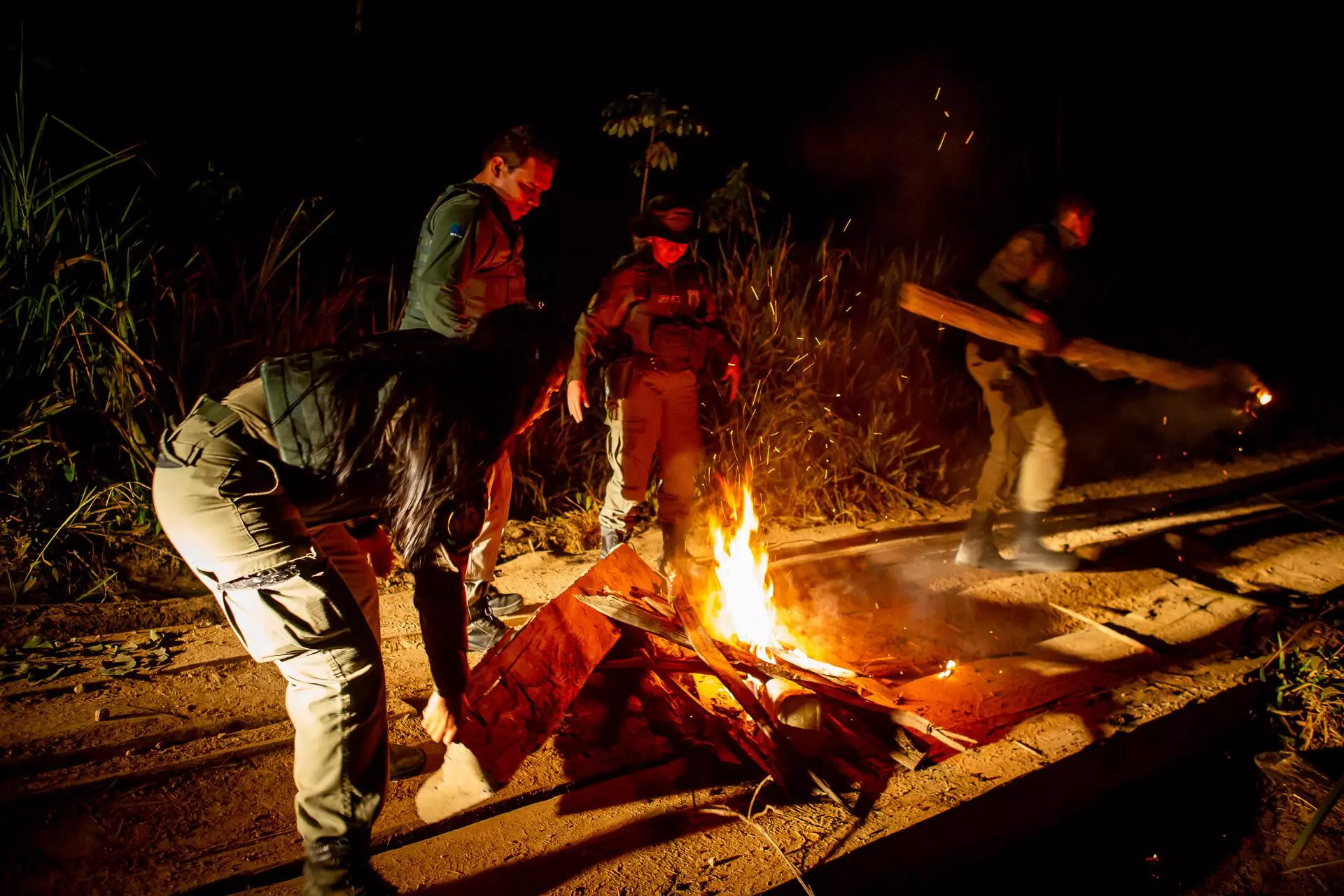
Environmental protection agents put out a fire in Indigenous territory. Known as grileiros, these landgrabbers engage in bold, systematic sabotage
Since last year, Ibama agents have been planning an operation to remove all unlawfully raised cattle from Ituna/Itatá. In the language of the Asuniri, one of the region’s Indigenous peoples, Eraha Tapiro means “take cattle.” ibama spent weeks doing aerial surveillance of the region and located 21 herds of cattle scattered across the Indigenous land. On August 17, the operation shifted into the field with the help of personnel from Funai, the Federal Police, the Federal Highway Patrol, the National Public Security Force, the Chico Mendes Institute for Biodiversity Conservation (ICMBio), and the Pará State Agricultural Defense Agency.
“This is the most challenging operation I’ve ever taken part in,” says Chiara Laboissiere, an environmental analyst with Ibama who works in the field as a kind of administrative secretary for Operation Eraha Tapiro. This government action targets a number of environmental criminals who have invaded Indigenous lands to raise cattle there. The livestock must be rounded up and herded to one strategic location, a ranch that has been transformed into Ibama’s base of operations. From there, the cattle will gradually be trucked to a slaughterhouse in the region of Altamira, a plus-60-mile-long trip over precarious, unpaved roads. Since each truck can haul only 15 to 20 head, the operation will have to be repeated dozens of times. This already complex task is systematically sabotaged by cattle owners, emboldened by the fact they know the region well, are part of the local elites, and enjoy impunity. Not even the heavy weaponry brandished about by the police who are assisting Ibama intimidates them.
One day earlier, Friday, August 25, 8:00 PM
“Before 2011, there was nothing but forest in the Ituna/Itatá area. It was the demarcation process that set off the invasion by livestock raisers,” says Ibama inspection agent Givanildo Lima, a soft-spoken, mild-mannered 50-year-old who leads Operation Eraha Tapiro. “The deforestation of Ituna/Itatá was planned and executed by a gang who holds a great deal of political power. Making a success of this operation will demonstrate our ability to fight crime in the Amazon, which is increasingly organized.”

Ibama did aerial surveillance of the Indigenous territory for weeks to prepare for the operation. Givanildo Lima, head of the operation, underscored the political power wielded by the gang that is deforesting and raising cattle in the region
Givanildo speaks to SUMAÚMA while sitting on a wooden bench on the farmhouse verandah at the illegal ranch that gas been taken over and made the agency’s base of operations. The bare-cement verandah is the only part of the building made of masonry. The rest of the structure, painted baby blue, is built of wood and has low ceilings and a roof of asbestos cement tiles, a combination that traps in the intense Amazon summer heat even after the sun goes down. August is usually one of the hottest months of the year, and the 2023 El Niño may be worsening the drought. Dinner has been laid on the long table next to the bench: huge pots of rice and black beans, cassava flour, meat, and cabbage salad, prepared by Funai staff. Environmental agents and police officers help themselves, piling food onto deep plates of tempered glass.
The ranch that Ibama has turned into its base of operations lies on land stolen by a man named Danilo José Barros Rocha, who has homes in Marabá and Altamira, the two largest cities in the region. Officially, according to Pará State Agricultural Defense Agency records, Rocha owns only 70 head of cattle. But agents found 400 Nelore on the 800-hectare piece of land that he stole and then registered with CAR (330 hectares of the property have been deforested). SUMAÚMA reached out to Rocha through his attorney, Ivonaldo Cascaes, but had received no response at the time of publication. SUMAÚMA remains available for his statement.
Ibama had ordered Danilo Rocha to remove his cattle from Indigenous lands in 2022. Now, in addition to having his cattle seized, he will be fined BRL 500,000, or roughly USD 100,000. The confiscated livestock may be worth as much as USD 1,000 a head. “Cattle have always been the big cause of deforestation in this region. So the only way to solve the problem is to seize the herds and hurt the invaders financially,” argues Givanildo Lima. The operation coordinator is referring to the grileiros’ strategy of guaranteeing possession of stolen land by grazing cattle on it unlawfully to give the appearance of both “productivity” and “ownership.” The grileiros put their faith in the historic practices of various Brazilian administrations, which ended up enacting legislation that effectively “legalized” this criminal appropriation of public lands, approved by Congresses dominated by predatory agribusiness interests. This turns the grileiros officially into “rural producers,” “ranchers,” and “cattle raisers.” When oversight agents come along, the grileiros spread the story that the State is trying to “stop them from working” and “producing food.”
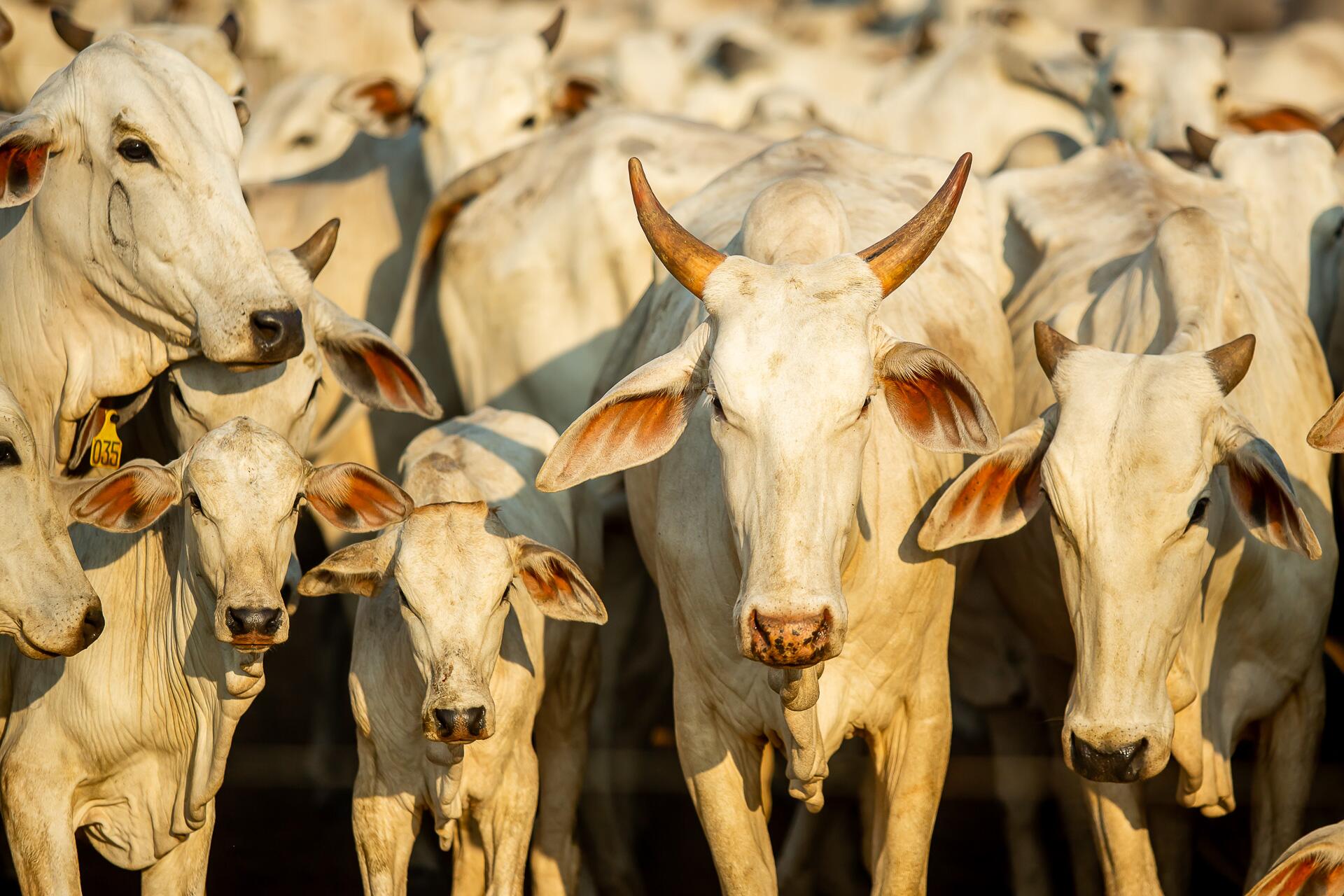
For the cattle, their removal is not a road to freedom but to death. The animals sense it and grow distressed
Rocha’s ranch has been selected as a base of operations because its strategic location facilitates access by the cattle trucks. But the choice is also symbolic. “The first infraction notice for deforestation in the Ituna/Itatá Indigenous Territory was issued precisely to this ranch, in 2013, because of deforestation in 2012,” says Givanildo. This was when the razing of the rainforest began to drastically reshape the region’s vegetation, and things have gotten exponentially worse since. Little progress has been made in the effort to demarcate Ituna/Itatá in the intervening 12 years, first under the administration of Dilma Rousseff (Workers’ Party), then under Michel Temer (Brazilian Democratic Movement), and lastly under Jair Bolsonaro (elected as a member of the Liberal Social Party, now Brazil Union, and currently a member of the Liberal Party).
The grileiros employ a perverse strategy: they move into the territory, set up house, and force isolated Indigenous people off the land. They can then argue that there are no Indigenous peoples and demarcation is therefore pointless. This approach bears similarities with methods employed centuries ago by bandeirantes, bands of adventurers and fortune seekers who hunted down Indigenous people, enslaved them, and stole their land to transform it into the large estates that characterize Brazil’s extreme land concentration.
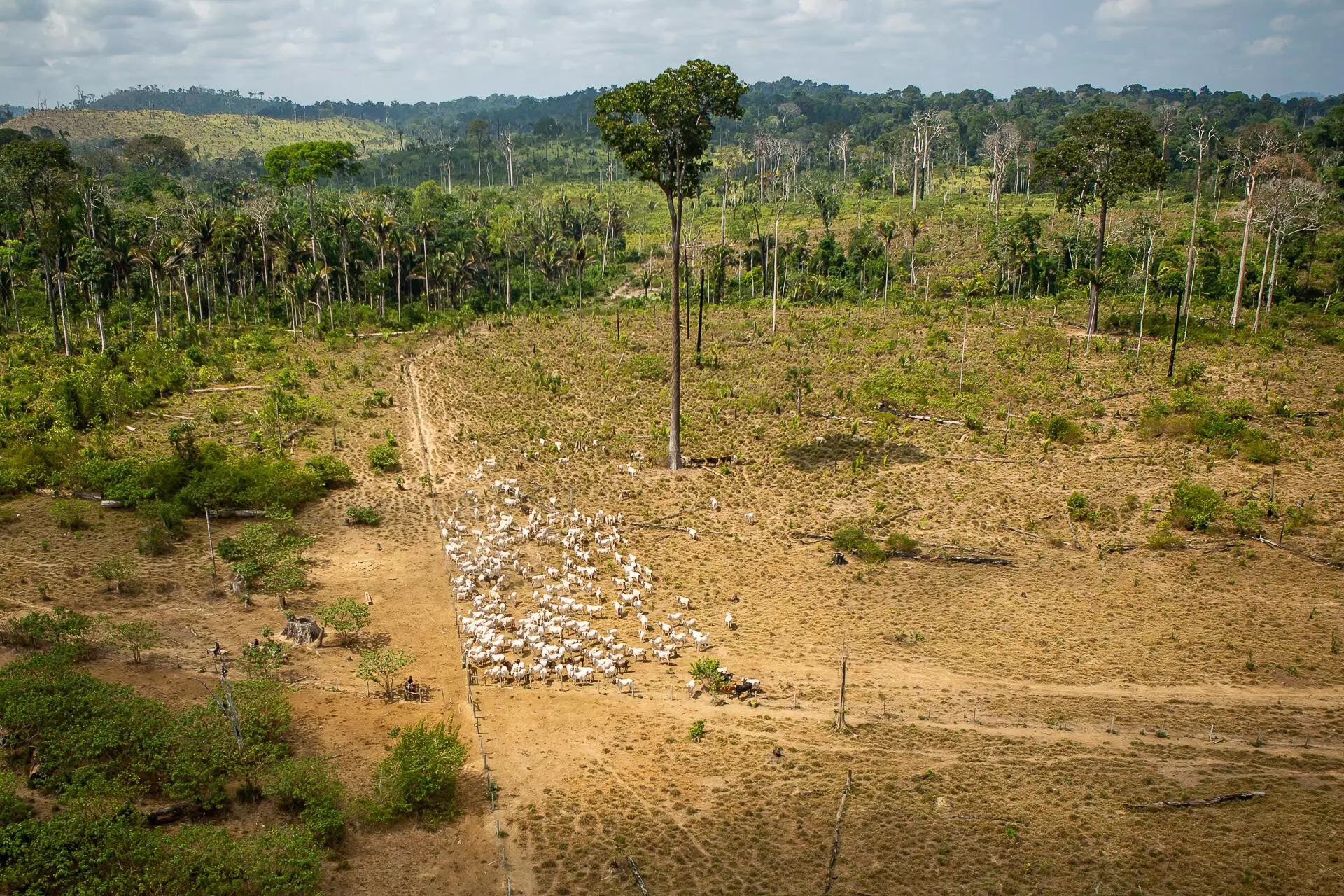
The grileiro strategy is to pasture animals in deforested areas and then spread the narrative that they are cattle raisers, ranchers, and rural producers
In the woods next to the home of the grileiro Danilo Rocha, Funai operational personnel found a polished stone tool they suspect is used as a kind of hatchet by the isolated Indigenous people in the region. This is an indication that the home was erected on traditional Indigenous territory.
Friday, August 25, 5:00 PM
The shortest route between the Ituna/Itatá Indigenous Territory and Altamira—the nearest city with regional offices of Ibama and other public agencies involved in the operation—cuts through Vila Mocotó. This town, situated in the municipality of Senador José Porfírio, consists of a few dirt streets and some dozen houses, most built from deforested wood. Known as the general headquarters of grilagem—the land-thievery scheme practiced by grileiros—Vila Mocotó lies only 18 miles from the edge of Ituna/Itatá, making it a strategic location in terms of Ibama’s battle against environmental crimes on Indigenous lands. According to agency staff, most of the hired hands who tend the illegally raised livestock in Ituna/Itatá and the gunmen who provide surveillance live in Vila Mocotó, as do a number of small herd owners.
The seemingly primitive look of Vila Mocotó belies the economic power wielded by the real players behind land theft operations in Ituna/Itatá. A report by Brazil’s National Human Rights Commission, published in May 2021, states that one-third of the 223 “properties” lying inside the Indigenous territory and registered with CAR have areas of over 1,000 hectares. Clear-cutting—the deforestation method where every tree is toppled and removed from an area—requires heavy machinery and costs at least USD 600 per hectare. This scale of grilagem requires capital.

The first convoys head to the slaughterhouse. In a complex operation, each truck can haul a maximum of 20 head of cattle
Vila Mocotó is sustained not just by economic might but also by powerful political allies. These include Senator Zequinha Marinho (Podemos, or “We Can,” party), a pastor with the Assembly of God evangelical church who began his political career in the 1990s. In 2003 he was elected federal deputy for the first time and in 2022 ran for governor with the backing of Jair Bolsonaro but lost to Helder Barbalho (Brazilian Democratic Movement). The senator has referred to the Ibama personnel who have cracked down on environmental crimes in Vila Mocotó, near Ituna/Itatá, as “crooks and scoundrels,” and under Bolsonaro submitted a formal letter requesting that the then president of Ibama, Eduardo Bim, take “appropriate action” against environmental agents. The document stated that it had been “proven that there are no isolated Indians in the Ituna/Itatá area”—which is a lie. SUMAÚMA sent a list of questions to the senator’s aides, including a query about whether he still supports the grileiros even after the acts of sabotage against Ibama.
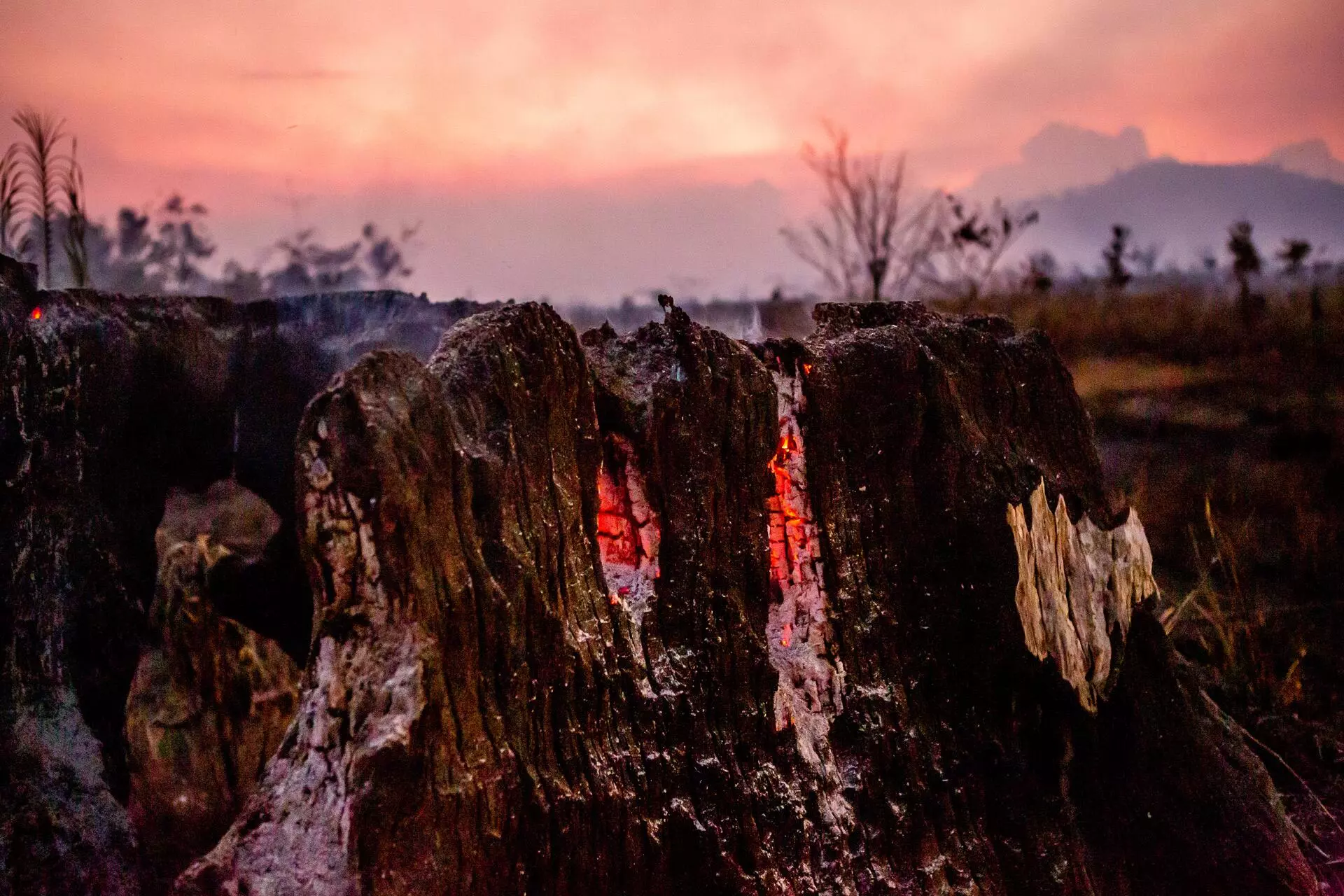
Large landowners began burning and clear-cutting rainforest in Ituna/Itatá Indigenous Territory in 2011, when the demarcation process was inaugurated. In 2019, Ituna/Itatá was the most deforested and destroyed region in Brazil
“Senator Zequinha Marinho defends and will continue to defend the rights of the farm families who have lived for decades in the area called Ituna-Itatá and adjacent areas,” the politician’s press office replied in writing. Marinho also said that “Ituna-Itatá is not Indigenous land,” basing his argument on a January 2022 decision by Funai during the Bolsonaro administration. At the time, the agency said it had suspended the ban on non-Indigenous people entering the territory, a measure that had been in place since 2011 so that studies could be conducted on the presence of isolated peoples. Months later, however, Funai itself renewed the ban for another three years. The senator said he “had never supported and will never support those suspected of invading public lands and destroying native vegetation” but that he “recognizes and defends the legitimacy of farm families, who cannot be viewed and treated as invaders and grileiros, nor as criminals.”
When the convoy of Ibama and National Public Security Force vehicles passes through Vila Mocotó, it is impossible not to notice the residents’ hostile attitude toward the environmental oversight agents. Those outside their homes stop what they’re doing and stare at the cars and their passengers. Others go to their doors or windows just to watch. The convoy’s presence will also be immediately reported over WhatsApp groups. This information is essential to planning acts of sabotage like the destruction of bridges. The agents monitor the grileiros’ movements while knowing they are also being watched by them.
Saturday, August 26th, 6:00 PM
A team comprised of staff from Ibama, Funai, and the Chico Mendes Institute for Biodiversity Conservation works for three hours to find an alternative to the bridge demolished by grileiros. The eventual solution is to use remnants of the destroyed structure to rig up a makeshift crossing through a shallow stretch of river so the trucks can continue their journey. While the agents are trying to open a path for their colleagues, who are busy herding the 500 seized cattle, the grileiros set fire to roadside vegetation. The criminals hope the flames will scare the animals and hamper efforts to herd them to the base of operations.
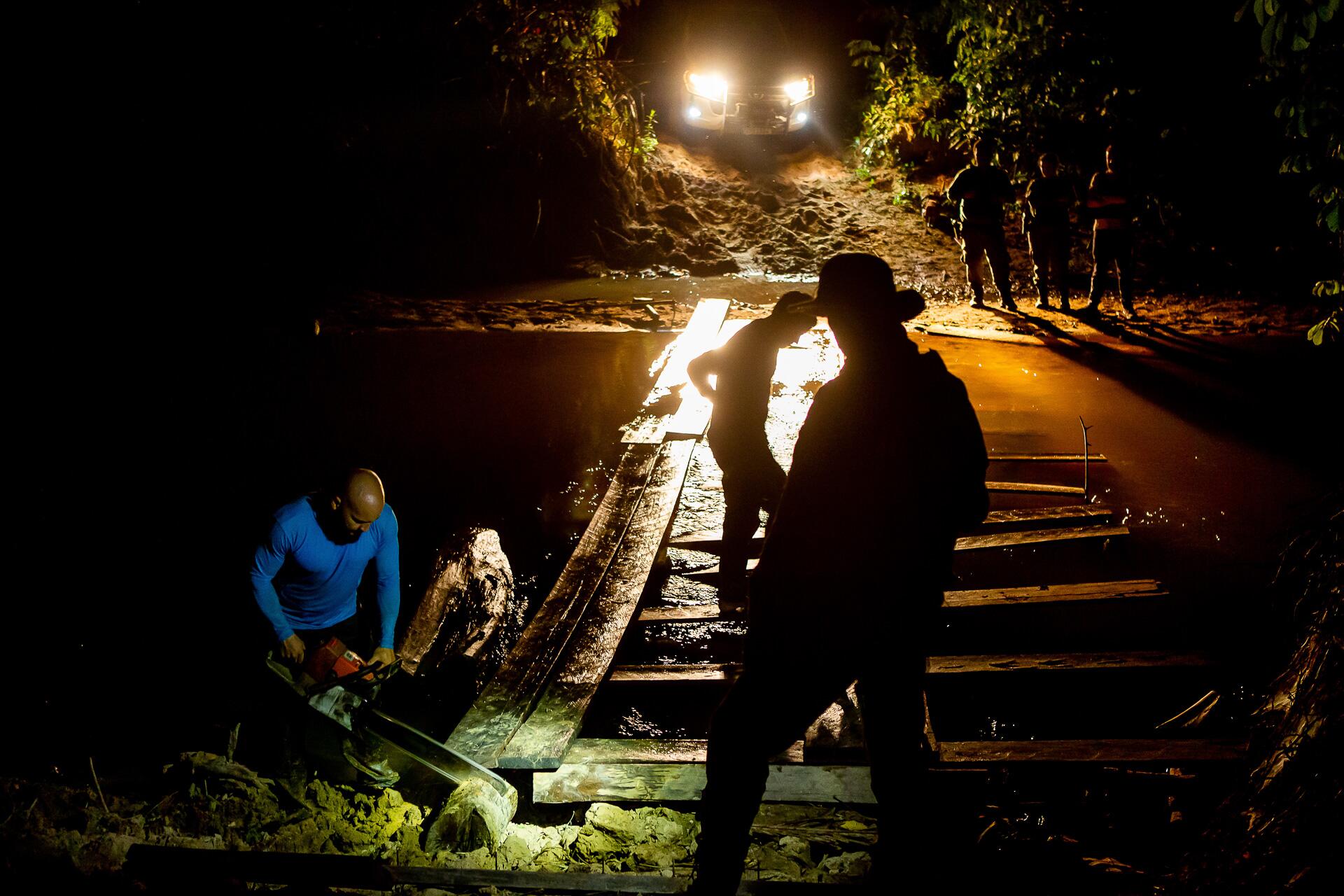
Personnel from Ibama, Funai, and ICMBio worked more than three hours to build a makeshift crossing to replace the bridge destroyed by grileiros
According to Ibama, these 500 head belong to a grileiro named Welton Borges da Silva, suspected of keeping 2,000 animals on a 5,000-hectare piece of land in Ituna/Itatá. Borges has 10,000 head of cattle registered with the Pará State Agricultural Defense Agency, the body responsible for registering livestock in the state. According to official paperwork, however, all of his animals are kept on ranches in Marabá, hundreds of miles away. Consequently, the state agency will be issuing infraction notices for the unlawful transportation of livestock, and Ibama plans to levy a fine of nearly USD 1.2 million for environmental violations. The grileiro has been receiving fines of this size since 2008 but, according to Ibama, has never paid any of them.
The area where agents found Borges’s herd in Ituna/Itatá has three different CAR registrations, all in the name of third parties. Although the animals are branded with the letters “WB,” Borges usually claims he is just the ranch manager. This is his strategy for preventing any seizure of unlawful cattle on Indigenous land from creating legal problems for his herds elsewhere in the state of Pará. Borges’s lawyer, Andreia Leal, told SUMAÚMA that he “has not invaded land inside the Ituna/Itatá Indigenous Territory, does not and has never kept cattle inside the area in question, has never committed any illicit acts, and has not been notified by the environmental agency.”
The grileiro tactic of setting fires in order to block efforts to remove the cattle fails. Despite the smoke and the many outbreaks of fire along the 18-mile stretch of road, the herd moves slowly toward the base of operations, driven by cowhands brought in from other regions of Pará. It will be some hours before they finally reach their destination, late at night.
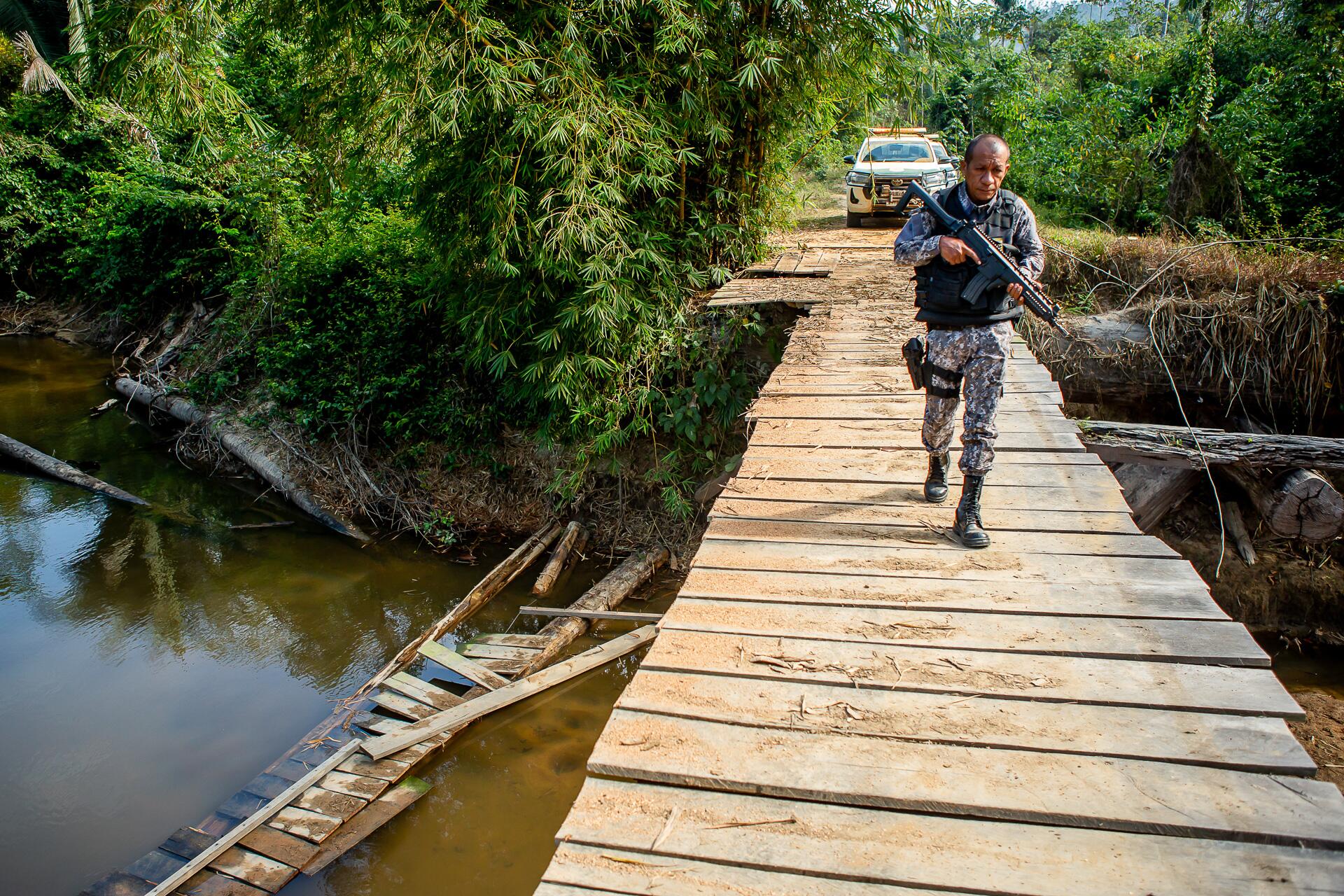
An officer from the National Public Security Force crosses a bridge destroyed by grileiros
Sunday, August 27, 9:00 AM
Expectations are high this morning. The first of the convoys loaded with cattle will leave for the slaughterhouse today. The Ibama-led operation has hired seven truckers, who started receiving threats from grileiros as soon as word got out. “This bum likes to betray rural producers… that’s why the cattle seizures… because of these betray its [sic],” reads a slightly garbled message circulating on WhatsApp groups in the region. “But everyone in Mocotó knows he’s in the middle Let’s see where this ends going [sic],” the message threatens.
According to Ibama, the author of these messages is Leonardo Martins Rocha. In addition to firing off threats via text, he also verbally threatened one of the truckers. Leonardo, who is a cousin to Danilo Rocha, the grileiro of the ranch serving as a base of operations, describes himself on social media as a cattle dealer. According to agents, Leonardo is also a grileiro who has laid claim to over 1,300 hectares in Ituna/Itatá. His threats have been sent on to the Federal Police, who may open an investigation. Speaking to SUMAÚMA by phone, Leonardo challenged Funai: “The way they want it, [the area] will never be [demarcated], they know there are no Indians there.” He also denied threatening one of the truckers. “That was just a misunderstanding, you can ask him. We don’t have any problems with each other, we’re friends, I have a cattle truck too.”
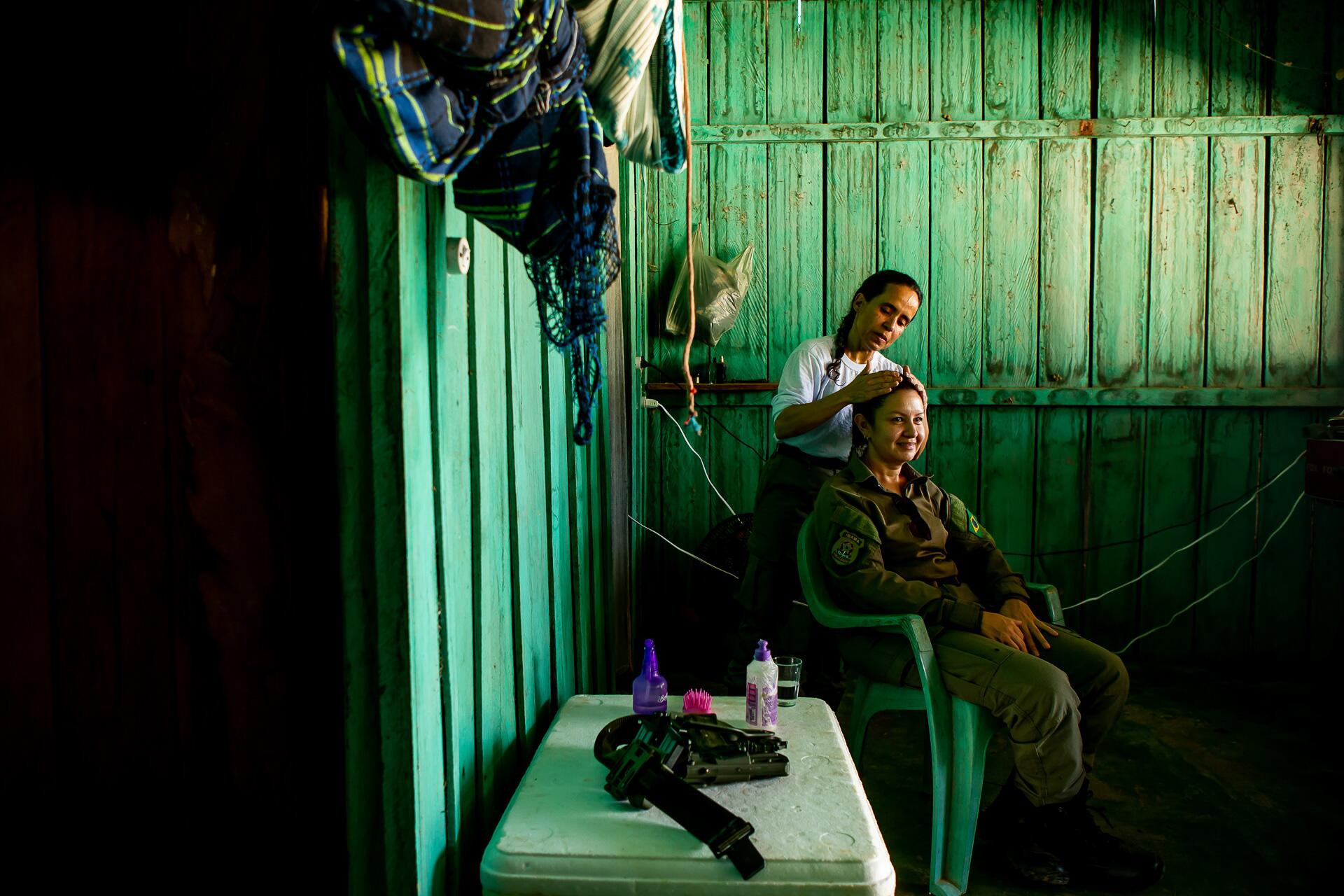
Heat, pain, and things in life: an Ibama agent asks an environmental analyst to braid her hair
While the truckers wait for the livestock to be loaded, the public agents are getting ready to go into action. Some use the time to escape the heat by taking a dip in a stream a few yards from the house. Others enjoy a cup of the region’s heavily sugared coffee in traditional six-ounce water glasses. In the kitchen, a Funai employee plays with a Siamese kitten that was found with the cattle a few miles away; she plans to adopt it and take it home. An Ibama agent asks Chiara to braid her long black hair so she can get a little relief from the heat.
It’s a short break. One of the bridges along the route to the slaughterhouse in Altamira was destroyed overnight. With the help of three Ibama helicopters, agents scout the region in search of alternative routes. They would like to avoid going through Vila Mocotó, where they run the risk of a reaction from local residents. A team from the National Public Security Force is sent in to guard a crucial bridge along one of the alternative routes; the order is to keep it from being hit by saboteurs. Meanwhile, a trucker climbs into a helicopter to assess whether the long, heavy vehicles can get through. “Affirmative,” he announces.
Sunday, August 27, noon
With the route defined, they start loading the cattle into the trucks. At 2:00 PM, a convoy of vehicles from the Federal Highway Patrol, Federal Police, and Ibama leaves the base. The trip is just a little over 60 miles, but it will be a long one—the road is rough and potholed, and frequent stops are necessary to check on the condition of the animals.

Innocent victims: cattle spend at least eight hours packed in trucks where the heat index surpasses 104 degrees Fahrenheit
Cattle are the innocent victims of a war against nature in the Amazon. Exhausted from the previous night’s cattle drive, the animals will have to endure hours packed in the back of a jostling truck where the heat index can surpass 104 degrees Fahrenheit. It’s not a road to freedom but to death. The animals know it, even before they’re loaded. They can feel it and grow stressed. One of the cows breaks her neck when she tries to jump the fence. She is pregnant. When the animals finally reach their destination, they will all be slaughtered. The meat may possibly be donated to social programs.
Sunday, August 27, 10:30 PM
The convoy finally reaches the region of Assurini, where a ferry is waiting to take the trucks to Altamira, on the opposite bank of the Xingu River. Boarding is slow. It’s after midnight when the vehicles exit the ferry and drive the final miles to the slaughterhouse. This first trip transferred only 123 of the animals raised unlawfully in the Ituna/Itatá Indigenous Territory. Ibama estimates it will take weeks to remove all 5,000 head from Indigenous territory. The operation has already resulted in total fines of roughly USD 3 million—if they are ever paid.
The largest-ever cattle-removal operation demonstrates the Lula administration’s willingness to resume oversight of environmental crimes against the Amazon, following four years of impunity under the administration of far-right president Jair Bolsonaro (2019-2022). But the rainforest only has a chance of remaining standing if Indigenous territory is demarcated. In places where the forest is still intact, isolated Indigenous people must be watching all this movement. If these people are respected, we will never know what they think of the civilization that corrals and kills them.
Fact check: Plínio Lopes
Spell check (Portuguese): Elvira Gago
Translation into Spanish: Julieta Sueldo Boedo
English translation: Diane Whitty
Photography editing: Lela Beltrão
Page setup: Érica Saboya
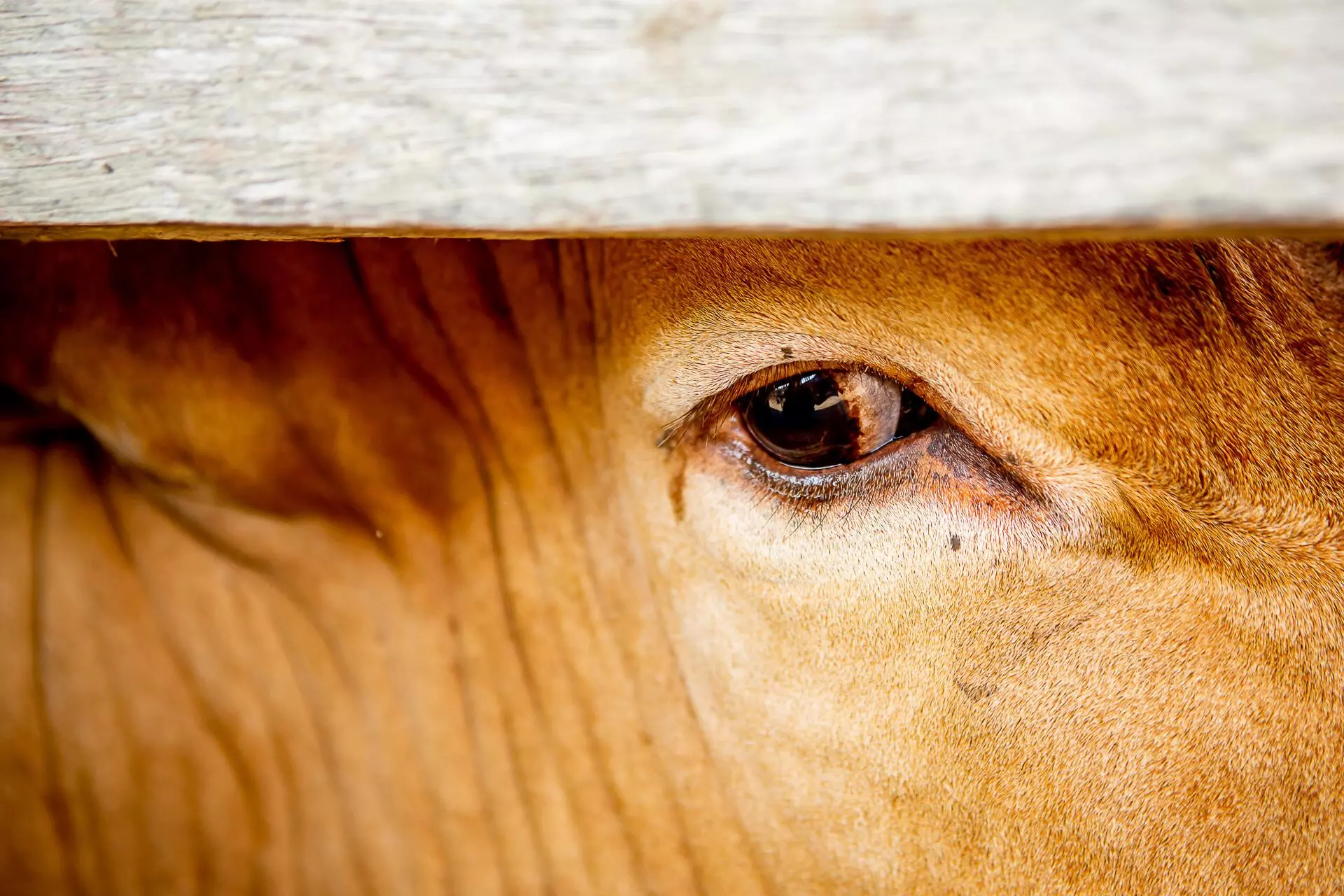
Animals raised illegally on territory that belongs to isolated Indigenous peoples were found by Ibama in August 2023, during an operation covered by SUMAÚMA. Photos: Lela Beltrão/Sumaúma

